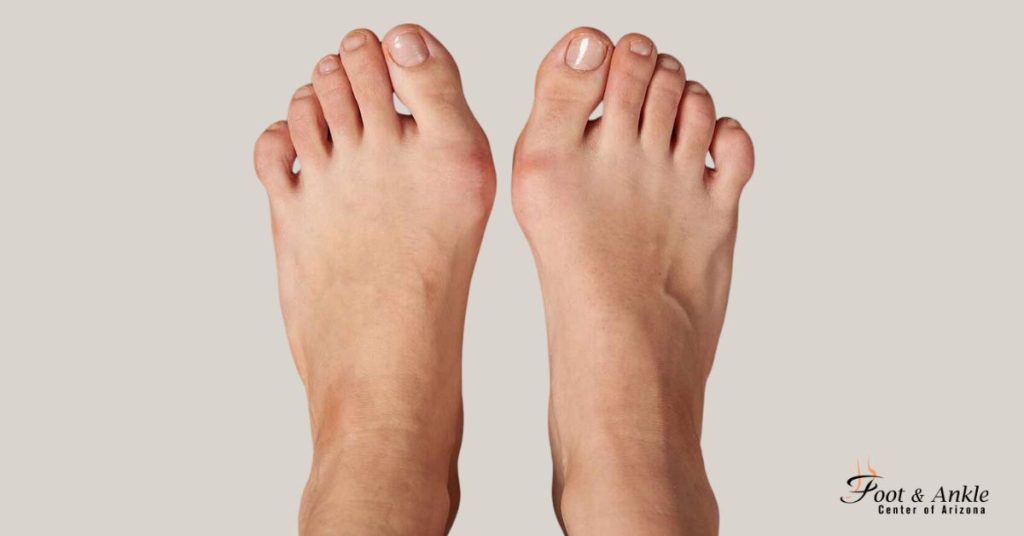Bunions are more than just an aesthetic concern; they can actually have a real impact on your quality of life, especially while walking. Those painful lumps that form at the base of the big toe can cause pain and inhibit normal activities. Aiding bunion pain relief is necessary for maintaining mobility and general health. This article explores various ways to alleviate bunion pain while walking, from temporary relief to permanent options.
Know About Bunions
Bunions are a bony bump that extends from the base of the big toe; medically, it is referred to as hallux valgus. It means that the big toe is deviated towards the second toe. The result is a bulging outward of that joint due to misalignment. The misalignment may be accompanied by pain, swelling, and inflammation. It makes walking painful and difficult due to pressure on the deformed area.
There are a number of causes that can lead to a bunion: from genetics to ill-fitting shoes, and from a variety of medical conditions such as arthritis. Women are more likely to develop bunions, partially because women have a higher percentage of narrow, high-heeled shoes.
Immediate Relief Strategies
When having bunion pain, finding relief immediately will mean quite a lot. Here are some effective techniques:
Rest and Modification of Activities:
Keep off your weight-bearing as much as possible to reduce pain and inflammation. Avoid activities involving excessive pressure on the feet, such as long walks and standing.
Ice Packs and Heat Therapy:
The application of an ice pack to the bunion, 15-20 minutes at a time, several times a day, may help reduce swelling and numb your pain. On the other hand, heat therapy, like warm baths or heating pads, will relax muscles and soothe discomfort.
Over-the-Counter Pain Relievers:
Take an NSAID such as ibuprofen or naproxen as directed on the package label to relieve pain and inflammation. Always follow the recommended dosage, and consult your doctor if you have doubts.
Shoe Modifications
The right shoes can go a long way in pain management caused by bunions. Here is how you can modify
Importance of Wearing Properly Fitting Shoes:
Importance of Wearing Properly Fitting Shoes Shoes that are too tight or have high heels can, therefore, exacerbate bunion pain. Go for shoes with a wide toe box that allows your toes to move about comfortably.
Recommended Types of Shoes:
Recommended Types of Shoes Look for shoes with cushioned soles and good arch support. Shoes made from flexible materials that will accommodate your foot’s natural shape are especially recommended.
Orthotic Inserts:
These orthotic inserts, if custom-made, can shift some body weight of the bunion area. In addition, they can support the foot. Many over-the-counter options may also be useful in bunion pain management.
Home Remedies and Exercises
Adding some home remedies and exercises into your routine will ease bunion pain and enhance your foot health:
Stretching Exercises:
Regular exercise in stretching the foot may help reduce tension and increase flexibility. Some simple exercises include toe stretches—gently pulling the big toe away from the rest of the foot—and the towel stretch, where you use a towel to pull your toes back towards you.
Strengthening Exercises:
One can get to have better support with fewer pains by engaging in strengthening exercises. Exercises that manage to strengthen the muscles around your bunion, like curling your toes to pick small things and rolling a ball under your foot, are helpful.
Bunion Pads and Toe Separators:
Bunion Pads and Toe Separators: Bunion pads can cushion the bunion and reduce friction, while toe separators can help realign the toes and hence reduce pressure on the bunion.
Professional Treatments
In more serious cases of bunion pain, professional treatments may be necessary. Here are some options:
Non-Surgical Treatments:
With physical therapy, it is possible to strengthen the muscles of the foot and, at the same time, improve their alignment. Corticosteroid injections may be given to reduce short-term swelling and thus relieve pain. Such modalities can provide immense relief to the patient and significantly improve mobility.
Surgical Options:
In more serious cases of bunions that do not respond to traditional conservative care, surgical intervention may be required. Surgical techniques can realign the toe and remove the bunion. The type of surgery recommended will depend on the severity of the bunion and the individual needs of the patient. Recovery from surgery to correct a bunion usually requires a period of rest and rehabilitation.
Expected Outcomes and Recovery:
Most patients see a significant improvement in pain and function after professional treatments or surgery. However, recovery time is variable, and adherence to post-operative instructions regarding exercise and weight-bearing status is quite important to ensure maximal outcome.
Lifestyle Modifications
To manage and prevent the pain caused by bunions, making some of the following modifications to lifestyle in addition to some of those more focused treatments will be helpful:
Maintain a Healthy Weight:
Additional weight could be another factor that exacerbates bunion pain because it puts more pressure on the feet. Maintaining a healthy weight through good eating and exercise will contribute to removing unnecessary pressure from your feet.
Reduce Stress on the Feet:
Reduce the amount of stress on the feet as much as possible. For example, walking long distances in shoes that do not fit may be stressful. This can also be accomplished by including rest periods and avoiding high-impact activities to minimize pain.
Also Keeping good general foot health:
Keep your feet clean and trim your toenails. This can prevent other foot problems from developing that can be related to bunions.
When to Seek Medical Advice
It’s important to seek medical advice if you experience severe or persistent bunion pain. Signs that indicate the need for professional evaluation include:
- Increasing pain that does not improve with home treatments.
- Significant swelling or redness around the bunion.
- Difficulty walking or performing daily activities due to pain.
A healthcare provider can assess the severity of the bunion and recommend appropriate treatment options.
Conclusion
Treating bunion pain when walking includes some immediate relief measures, shoe modification, home care, professional treatment, and some lifestyle changes that need to be followed. Bunion pain treatment via these will enhance comfort, mobility, and overall quality of life. If one suffers enough pain that conservative measures of treatment are not helpful, one needs to seek professional treatment to try to achieve a satisfactory solution. Proactive steps in addressing bunion pain will create a huge difference in being able to walk comfortably and pursue activities of daily living.




